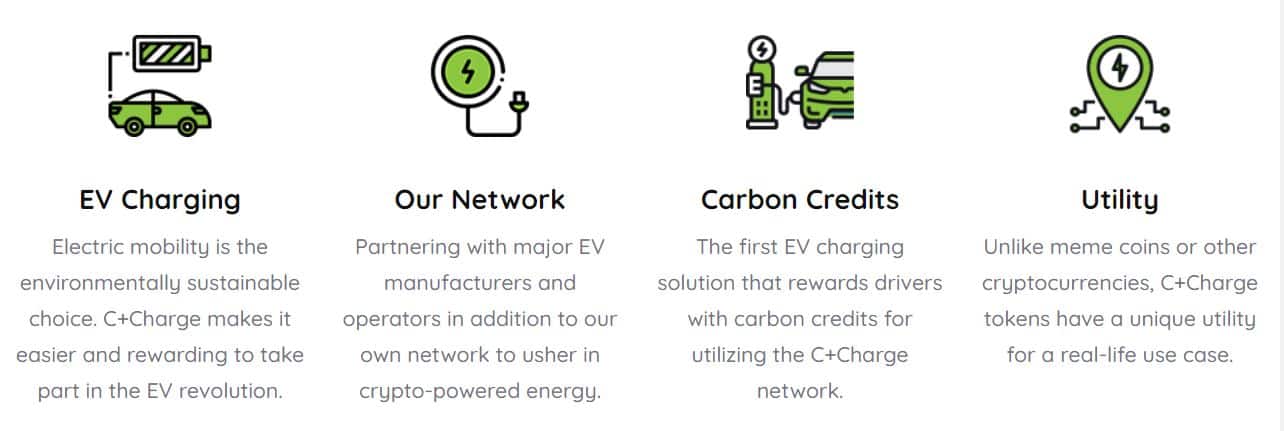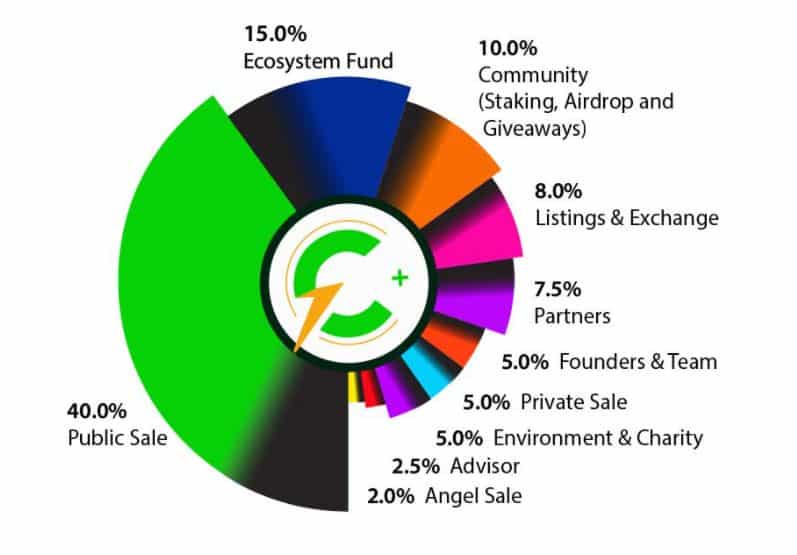The future of electric vehicle (EV) charging has finally come, yet the carbon credits market for EVs is still highly centralized and C+Charge aims to change that.
Big industry players such as Tesla has earned hefty income from selling carbon credits, making a total of ~5.4 billion to date. But the small ones like their consumers enjoy little to none of the rewards of their carbon reduction actions.
Democratizing Access to Carbon Credits Market
In 2022, the carbon credit industry is at around $851 billion in size. And with an average growth rate of 31% per year projected over the next few years, the market will reach $2.4 trillion in 2027.
Yet, participation in the carbon credits market remains limited to large corporations that are paying to pollute. Many firms that remove carbon from the air or invest in carbon offset activities also have a role in this near trillion-dollar industry.
But many people, especially small consumers, are still unfamiliar with the carbon credit market. One reason is because they don’t have the capital to access the market even if they also do carbon avoidance actions. One of them is driving an EV.
- In the US, the average passenger vehicle releases 650g CO2/km. The government has plans to phase out fuel cars with EVs while Canada and European nations are also planning the same.
Unfortunately, there’s currently no set standard for EV charging customers and there’s also no uniform payment gateways available across different charging stations. Charging station owners and EV manufacturers do earn carbon credits but EV drivers don’t.
This is why C+Charge created a blockchain-backed solution to address such issues through its real-world dynamic utility token. The goal is to democratize access to the carbon credit market.
Democratization of the carbon credit industry plays a key part in its future growth. And cryptocurrency or blockchain technology will play a key role in promoting accessibility.
C+Charge seeks to bring more awareness and accessibility to the carbon credits markets. One way to do that is rewarding EV drivers with carbon credits as they charge their cars. The payment system is opening up to a greater number of EV consumers to drive demand.
C+Charge and GNT Carbon Credits
C+Charge is developing a peer-to-peer blockchain-based payment system designed to bring carbon credits to EV drivers like Tesla.
It intends to create a complete EV charging ecosystem that democratizes the carbon credit industry. At the same time, providing a revolutionary customer experience with a streamlined and transparent pricing and payment system.
And the platform also hopes its solution can attract a wave of new EV buyers with the prospect of being financially rewarded for reducing their carbon footprint by driving an EV. Here are the platform’s key features:

How C+Charge Works
C+Charge’s strategic partnership with Flowcarbon will provide tokenized carbon credits through Flowcarbon’s Goodness Nature Token ($GNT).
Drivers will use the C+Charge application to pay to charge their EVs using the native cryptocurrency CCHG. Then they will be rewarded with carbon credits in the form of $GNT. Tokenholders will also earn carbon credits from a percentage of transaction fees on a pro-rata basis.
- GNT token represents a verified voluntary carbon credit backed by venture capital firms a16z Crypto, Samsung Next, and fund manager Invesco.
In essence, the more EV drivers charge and the more CCHG they spend, the more GNT they will earn. Plus, there’s a 1% tax on all transactions that C+Charge uses in buying carbon credits and then distributing them proportionately among token holders.
A unique feature of the C+Charge token ecosystem is that each time tokens are used to pay for a charge, they will be removed from circulation. This further gives a constant supply of demand in the network.
C+Charge Tokenomics

And as the charging stations grow, the number of tokens taken out of the system also increases, providing organic support.
Apart from being a payment platform for EV charging and a carbon credit tracker, C+Charge will also help users locate nearby charging stations and offer useful information. It will show real-time charger wait times and charging station technical diagnosis.
How to Invest in C+Charge Presale
To fund its development, C+Charge recently opened the pre-sale of its CCHG token. 40% of the token’s maximum supply of 1 billion will be available to the public over the next few weeks.
- Currently, CCHG tokens are on offer for $0.013 each, but will increase to $0.02350 over the course of four presale stages.
With the high levels of interest in green projects, as seen by the recent success of the IMPT.io presale, investors must decide soon if they want to purchase tokens at a discounted rate. Doing so is easy.
Users just need either a Trust Wallet or MetaMask Binance Smart Chain crypto wallet. They need to fund the wallet, which also includes an option for a card. Then they have to connect their wallet on the C+Charge website.
Users will now have the option to buy CCHG tokens using either BNB or USDT on the Binance Smart Chain. They can then claim the tokens that will enter their wallet after the presale is over.
Spreading the rewards of sustainable mobility with carbon credits, improving the environment, and reducing emissions on a global scale are what led to the C+Charge revolution.

